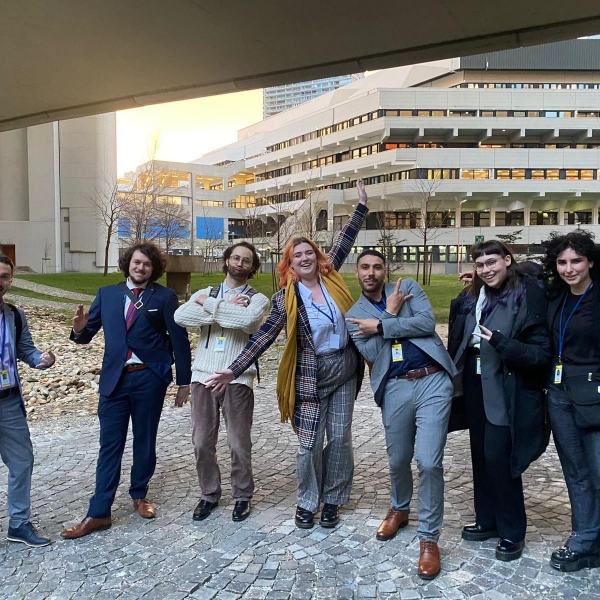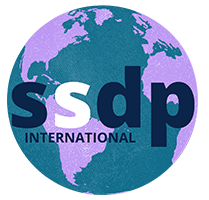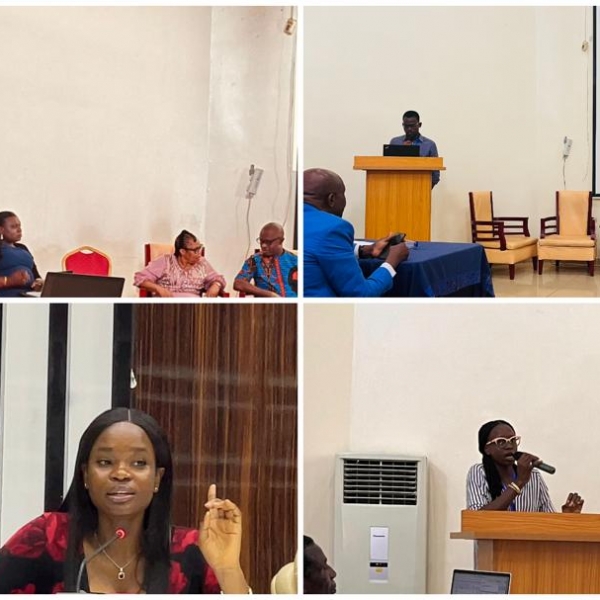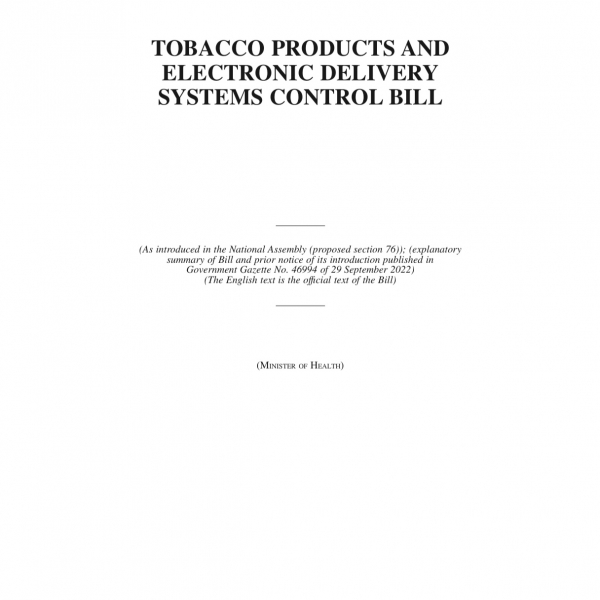Youth Advocacy at the United Nations: My First Day At CND as A Newbie

After getting off the U1 metro at the Vienna International Center (VIC), I was shuffled by the groups of distinguished-looking policy makers and shakers to the security line. Security at the VIC felt much like security going through a typical United States airport – remove everything out of your pockets and rest them snuggly into a bin to be scanned, remove belts, jackets, hats - the like - and walk through a metal detector. It was surprisingly smooth for the number of items most people had to surrender for checking. However, after security was badge pick-up, and the line was long enough to wrap around the lobby two full times. We were informed before-hand to submit a photo for our badge to be preprinted if we wanted to make the process faster, but when almost every person in attendance listens to the same advice, it completely backfires. Hence, it was faster to have your picture taken on site. I stood in line with Rebeca Rocha from Youth Rise for the better part of an hour before finally getting my access badge to the CND.
We made it through in time to find the others in the overflow room and catch the end of the opening statement by the chair of the CND. There was then the opening statement from ECOSOC elaborating on the intersectional reach of the “world drug problem”, touching on social, economic, and environmental implications. Up next was the Executive Director of the UN ODC – some of the issues addressed such as increased cultivation of coca and opium and subsequent increase in production and usage were spoken with a sense of alarm and an absence of compassion. She did mention a motivation to “reduce harm”, but in a context of treatment and rehabilitation for drug users to stop their drug use altogether, a disappointing view. Up next was the President of the INCB. This was the most eye-opening part of the opening statements. She spoke on five main points: marijuana legalization around the world decreasing the perceived danger of use considering high potency methods of ingestion, increased cultivation of coca leading to increased secondary extraction of cocaine in Europe, the opioid crisis in North America being exacerbated by the illicit manufacture and trafficking of synthetic opioids (specifically fentanyl), the increasing use of non-scheduled precursors in illicit drug manufacture, and finally, disparities in the availability of controlled substances for medical use. All these points are of “great concern” to the INCB, and that “much more needs to be done”. Ultimately, her voice was one of prevention and prohibition for drug-use outside of a medical or scientific setting.
The CND brings together all viewpoints on drug policy and legislation, which can be both exhilarating and stressful. After the President of the INCB spoke, it was the UN Human Rights Office of the High Commissioner’s turn. In this instance, it was quite exhilarating. His speech could not have been more opposite of the president of the INCB. He spoke directly and clearly about the necessity for the voices of civil societies and people who use drugs to be included in these policy reformations. “If drugs can ruin lives, so can drug policies.” He mentioned the failed War on Drugs on deterring illicit drug manufacture, and mass incarceration as a problematic result. He directly called for the abolishment of the use of capital punishment for drug users. He addressed associated stigmas around drug use being a leading cause for people to refuse seeking help or ignoring it when offered. “Driving the drug trade underground leads to the development of criminal networks.” He spoke of countries leading the way forward in reforming these regressive policies, such as Colombia leaving behind prohibition and Ghana focusing on a human rights and public health approach to drug use. “We must continue this progress in all regions of the world and stop the so-called War on Drugs. Instead, let us focus on transformative change – crafting drug policies which are based on evidence, which put human rights at the center, which are gender-sensitive, and which ultimately improve the lives of the millions of individuals effected.”
The Chair then concluded the opening statements to begin the general debate. At first, I thought it was going to be a formal debate between regions and countries on policy (which confused me because the CND had not addressed any of this yet), but I quickly realized it was a chance for each region and country delegate to provide their opening statements. Basically, they stated what they wanted out of the CND and any relevant policy agenda they were interested in focusing on. This was an informative session because I was able to hear what countries main priorities were. Being from the United States, I was curious how the delegate would balance the opioid crisis in light of many states pushing progressive policies forward as a response to the opioid crisis and improving health and wellbeing for recreational and medical drug users. Unfortunately, it was focused only on the opioid crisis. Don’t get me wrong, this is a significantly important discussion, but it is quite imbalanced when there is no consideration of how alternative drug policies can directly affect this issue.
The general debate encompassed the rest of the plenary for the day, while the Committee of the Whole (COW, lol) began discussing international resolutions with country delegates. To my surprise, this process consists of a Word doc being projected on the screen and, quite pain- stakingly, going through specific paragraphs to revise the words used. Countries would give their input on whether they wanted to change the resolutions or keep them the same, and at least once an hour, there was a general statement from one of the countries that we must “remain civil and keep the best interests of the people in mind”. I had a very hard time staying interested, as it wasn’t as exciting as the general debate, but I began to understand that this is where the real tangible work happens - I was actually watching international policy being changed. It was a paradoxical moment to feel such a strong sense of disinterest and boring slow-moving exchanges but knowing that this was exactly the work that needs to be done.
Outside of the plenary and the COW, there were intimate side-events put on by various bodies that were directed at specific policy initiatives. I attended a side event called “Time is of the Essence: Increasing Accessibility and Availability of Controlled Substances for Medical and Scientific Use”. Being a youth advocate and young scientist, I wanted to hear how they were addressing the issue of stigma around psychoactive drugs being a barrier to youth going into science with a desire to do drug-related research. The presentation itself focused solely on the medical accessibility of controlled substances with no mention whatsoever of scientific availability. Before the session concluded, I asked a question to direct some focus back to my interest stated above: “I am here as a member of SSDP and as a PhD student researching antibacterial development and the biosynthesis of psilocybin, so my representation is one for youth voices and young scientists. Stigma around psychoactive drugs makes the research pipeline extremely difficult for young scientists, and I have been told countless times to avoid discussing my interest in this field until I am more established. This type of response effectively deters youth from pursuing this important research. How is the negative role of stigma being addressed in the fight to increase availability and accessibility of controlled substances in science so that the next generation of young scientists can continue this important work?”. The response was one of positive reaction, but upon reflection, I realize it was quite hand wavy. They repeated my concern for stigma being a barrier to accessibility and availability of controlled substances, but merely reassured me that it was being considered. At first, I assumed their lack of response was because they had other things that were more important to worry about (specifically, the medical access of controlled substances), but I get the impression that they directly address topics that they are actually interested in and allude to reassurance when the topic is not a priority. The side events are a great networking opportunity, and afterwards I was able to connect with Marsela P. from the Multidisciplinary Association for Psychedelic Studies (MAPS) and Katherine Pettis, who gave me the information of Dr. Dingle Spence, a psychedelic therapy practitioner in Jamaica.
The plenary and COW sessions concluded about 20 minutes after 6 pm, the scheduled end time. The plenary only got through half of the countries for the general debate, so they picked up where they left off on the following day. Once everything was said and done for the day, I had a lot to process. My main impressions were ones of amazement and sensitivity. Amazement at the capacity of this Commission to bring much of the world together to discuss drug policy in light of drastically different perspectives, and sensitivity at the nuances and intricacies of political meetings and the language involved. This is a process that requires repetition, attention, and thoughtfulness. It is also a process that moves very quickly, so to maximize impact and benefit, one must be ready to ride the wave, brace the storm, and professionally fight for all human rights in the face of those who belittle the voices of individuals who use drugs



